Crowned with ceramics: The Church of the Savior in Belozersk
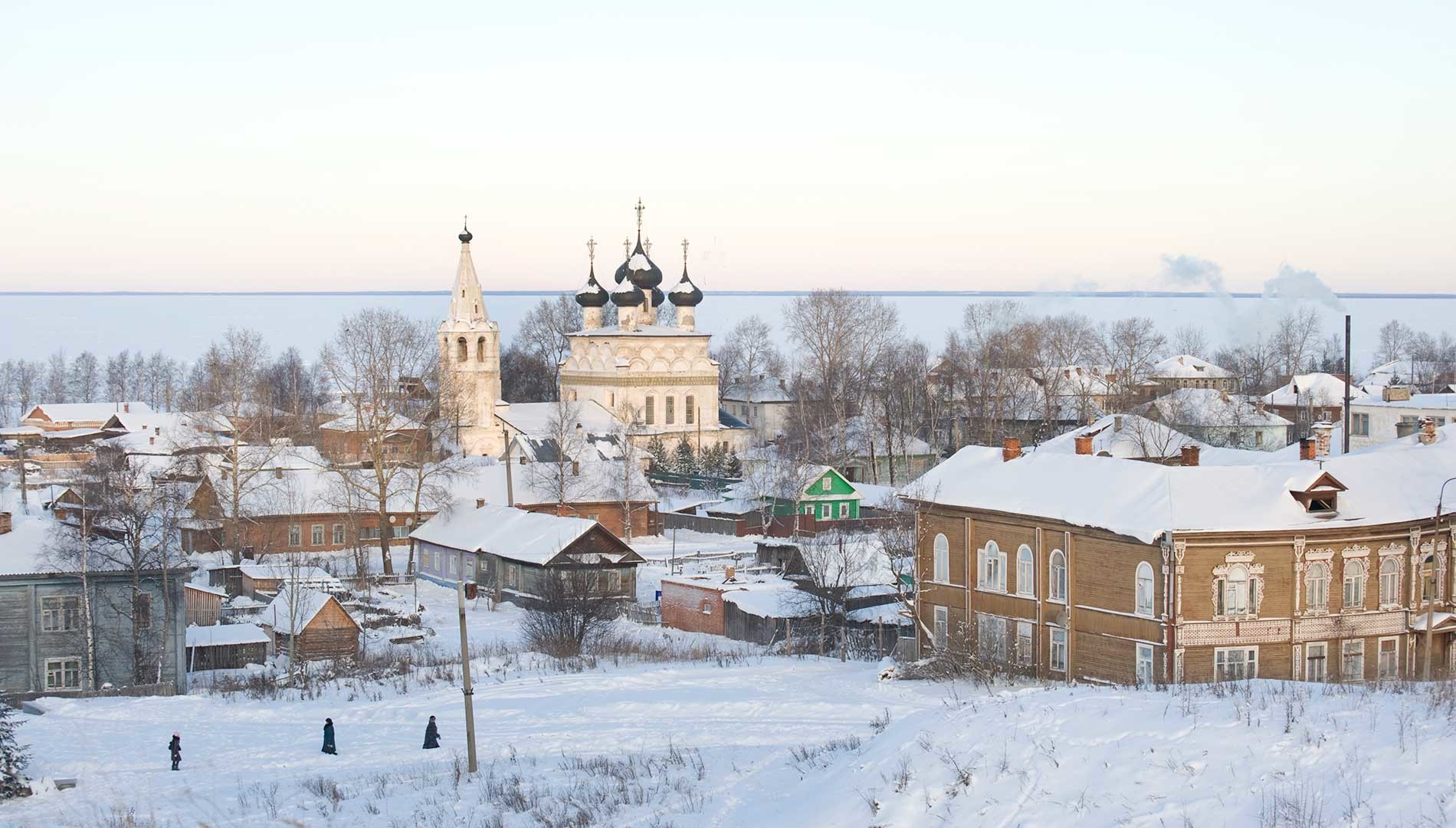
Belozersk. View northeast from kremlin rampart with Church of the Most Merciful Savior. Background: White Lake. December 29, 2010.
William BrumfieldAt the beginning of the 20th century, the Russian chemist and photographer Sergei Prokudin-Gorsky developed a remarkably versatile process for color photography. Inspired to use this method for recording the diversity of the Russian Empire, he undertook numerous journeys over vast distances from 1903 to 1916.
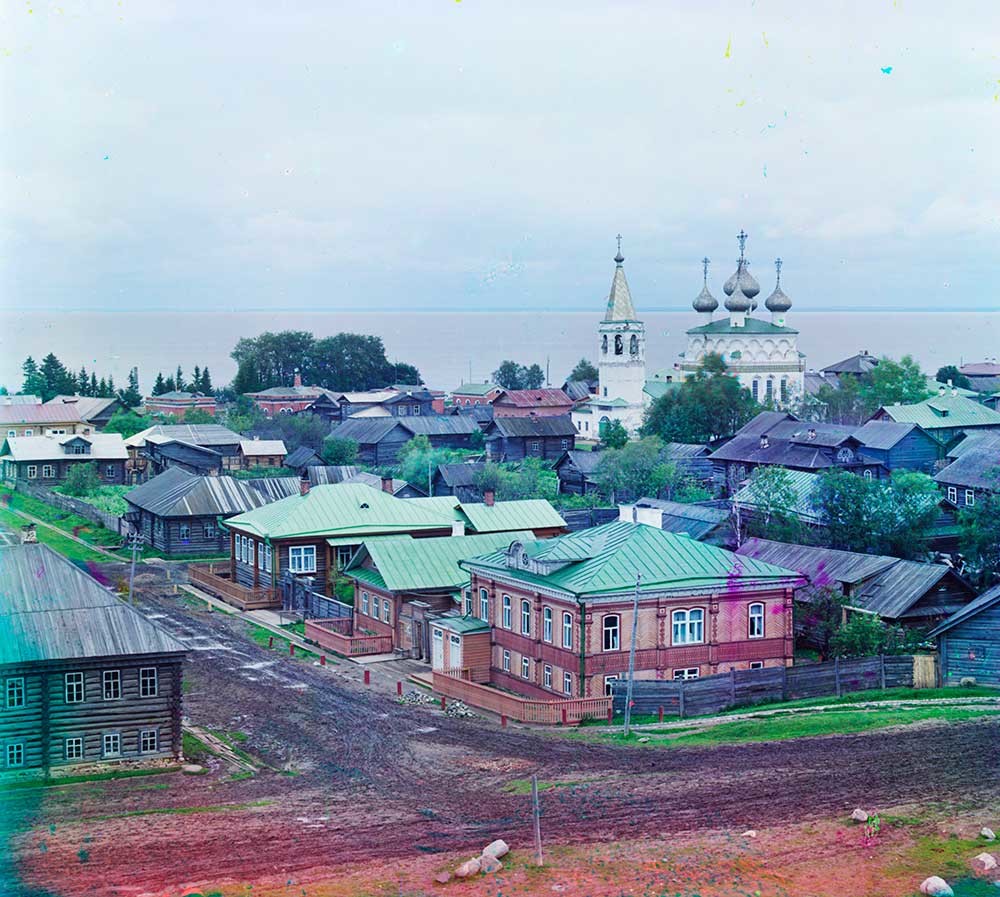
Belozersk. View northeast from kremlin rampart with Church of the Most Merciful Savior. Background: White Lake. Summer 1909.
Sergei Prokudin-GorskyIn June and July 1909,Prokudin-Gorsky received a commission from the Ministry of Transportation to photograph along the
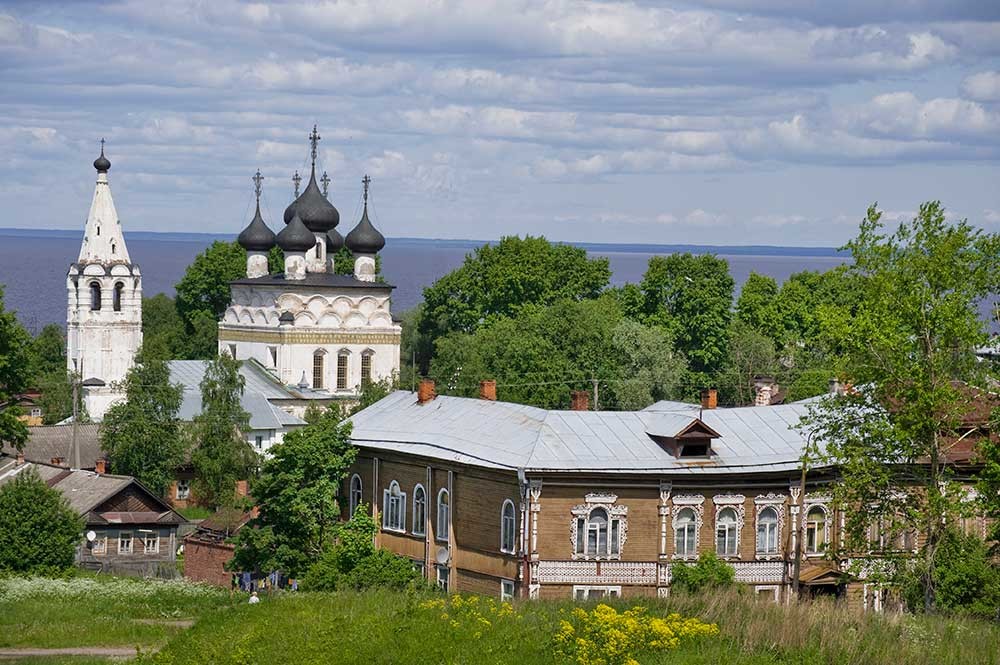
Church of the Most Merciful Savior, view from kremlin rampart. Foreground: Kalinin house. June 9, 2010.
William BrumfieldA major point in Prokudin-Gorsky’s journey along the waterway was the Vologda Region town of Belozersk (current population around 10,000). The town is among the oldest known settlements in northwestern Russia. “Beloozero” is mentioned in the Primary Chronicle under the year 862 as one of the five towns granted to the Varangian (or Viking) brothers Riurik, Sineus and
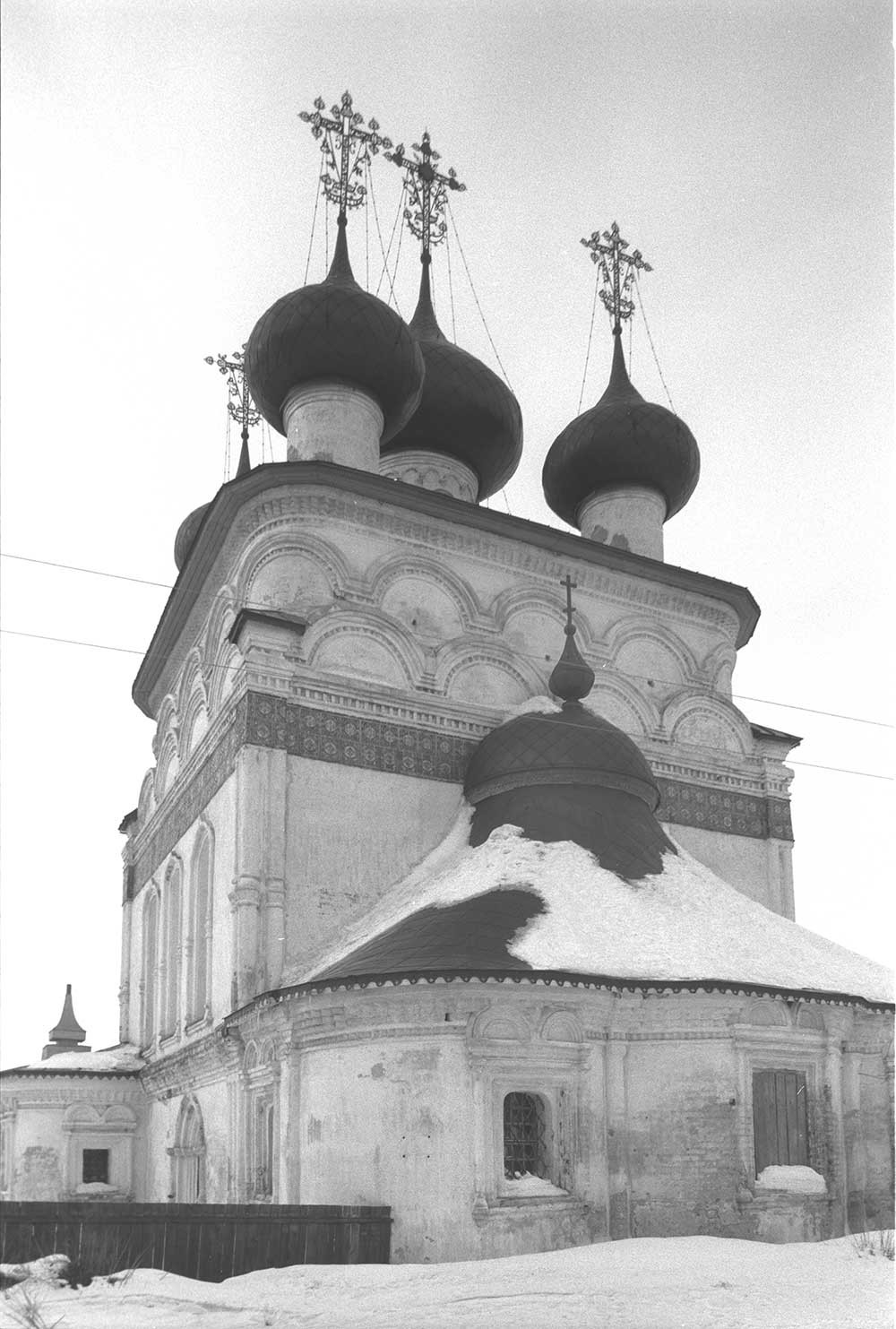
Church of the Most Merciful Savior, southeast view. March 3, 1998.
William BrumfieldWaterways bring prosperity
The early Beloozero was resettled until it occupied its current place in the late 14th century. Whatever the details of its origins and early location, the town’s name indicates the connection with White Lake (Beloe Ozero).
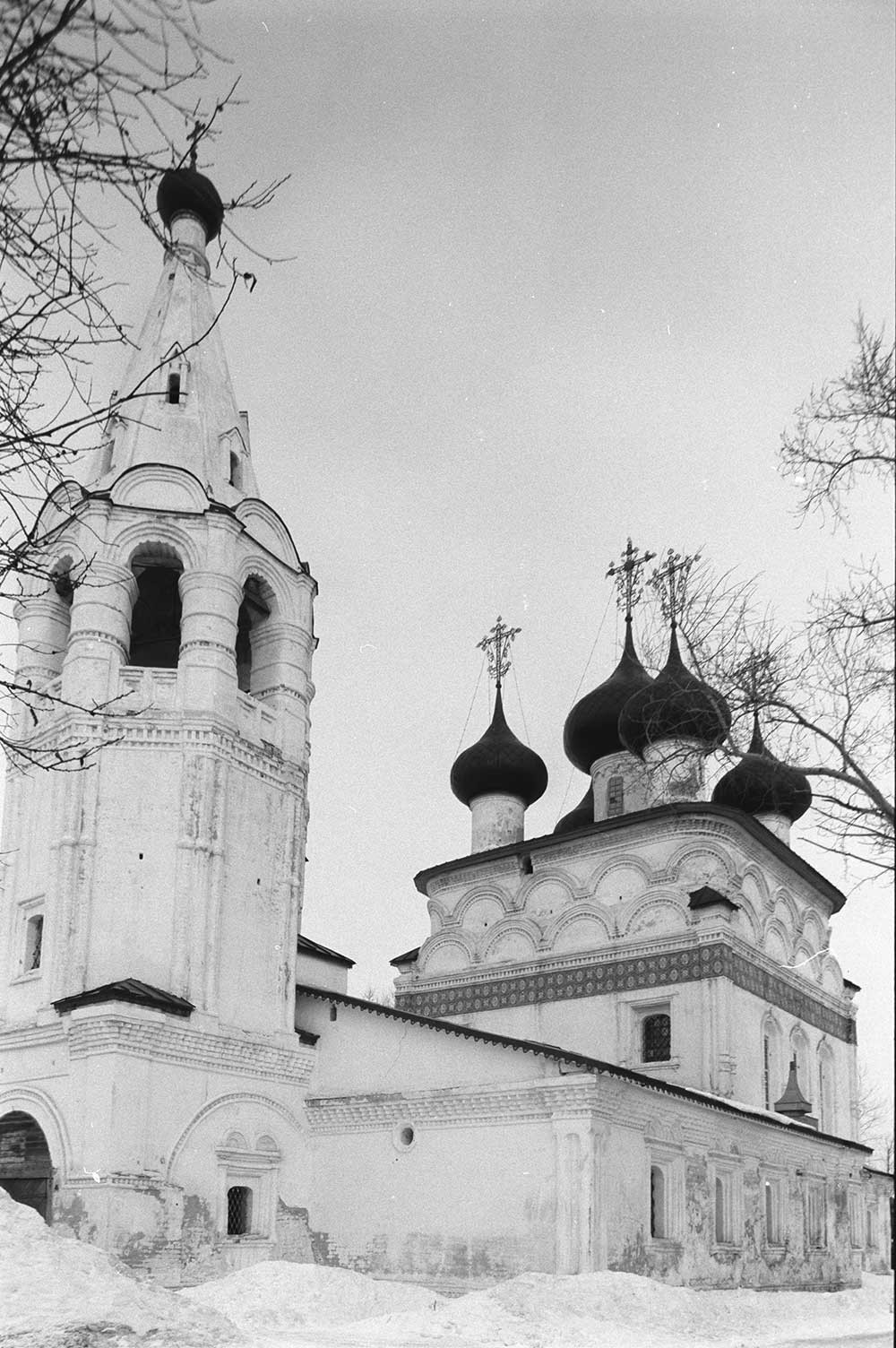
Church of the Most Merciful Savior, southwest view with bell tower. March 3, 1998.
William BrumfieldAlthough smaller than Lakes Ladoga and Onega, White Lake is a pivotal link between those two lakes and the Russian heartland. On the southeast end, White Lake drains into the Sheksna, an important tributary of the Volga and now the route of summer cruise boats between Moscow and St. Petersburg.
As Moscow’s power increased in the 15th century, Beloozersk gained importance as a bulwark for Muscovy in the northwest. Ivan III (the Great) understood the significance of this location, and in 1487 he constructed a large fortress, or kremlin, whose earthen ramparts still stand.
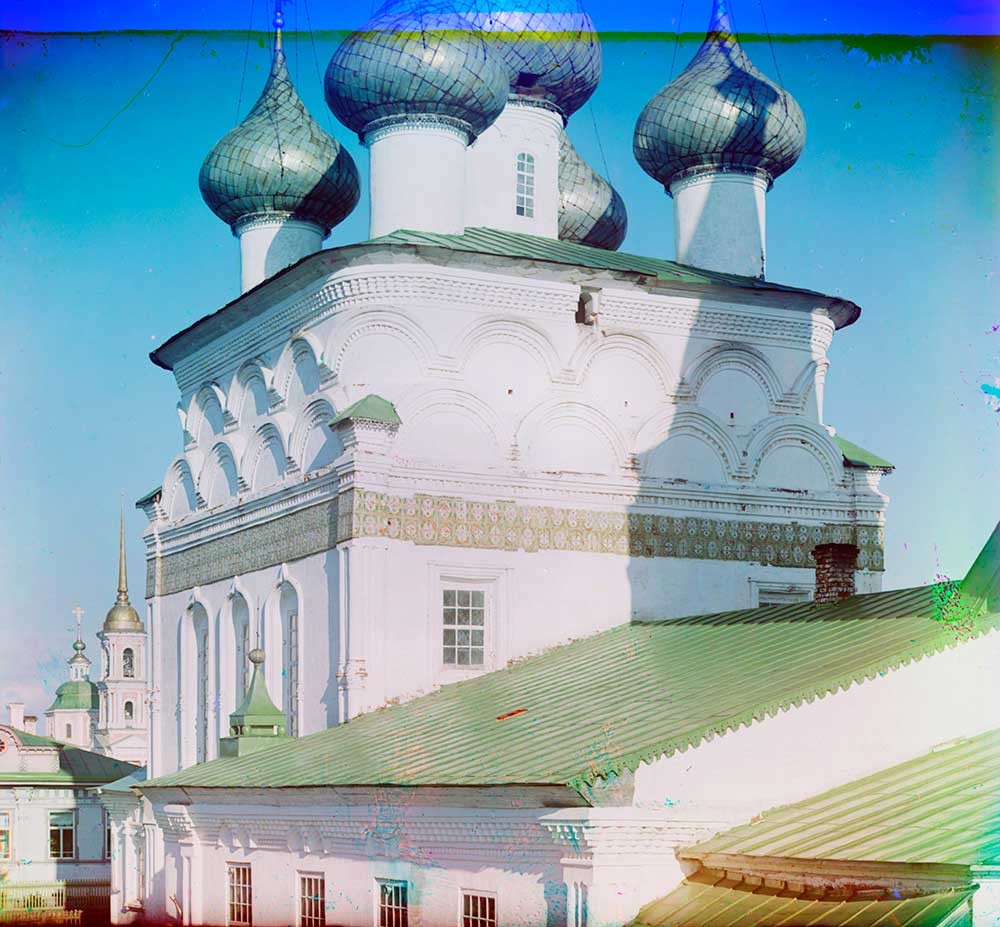
Church of the Most Merciful Savior, southwest view. Summer 1909.
Sergei Prokudin-GorskyThe town prospered during the middle of the 16th century, particularly as a source of iron goods and fish. Yet Beloozersk witnessed the disruptions of the latter part of the reign of Ivan the
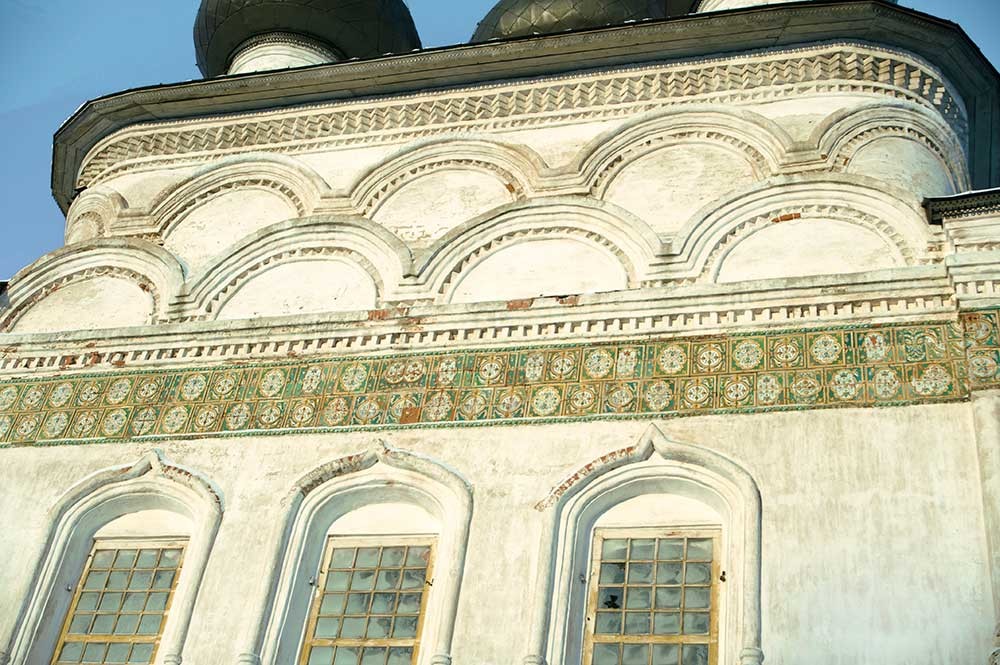
Church of the Most Merciful Savior. South facade with ceramic tile band. December 29, 2010.
William BrumfieldBelozersk’s location on major water transportation routes proved advantageous as trade revived in the late 17th century. With the founding of St. Petersburg in 1703, Belozersk found itself in a pivotal position between the Volga River Basin and Lakes Onega and Ladoga leading via the Neva River to the new imperial capital.
Paradise shown in ceramic
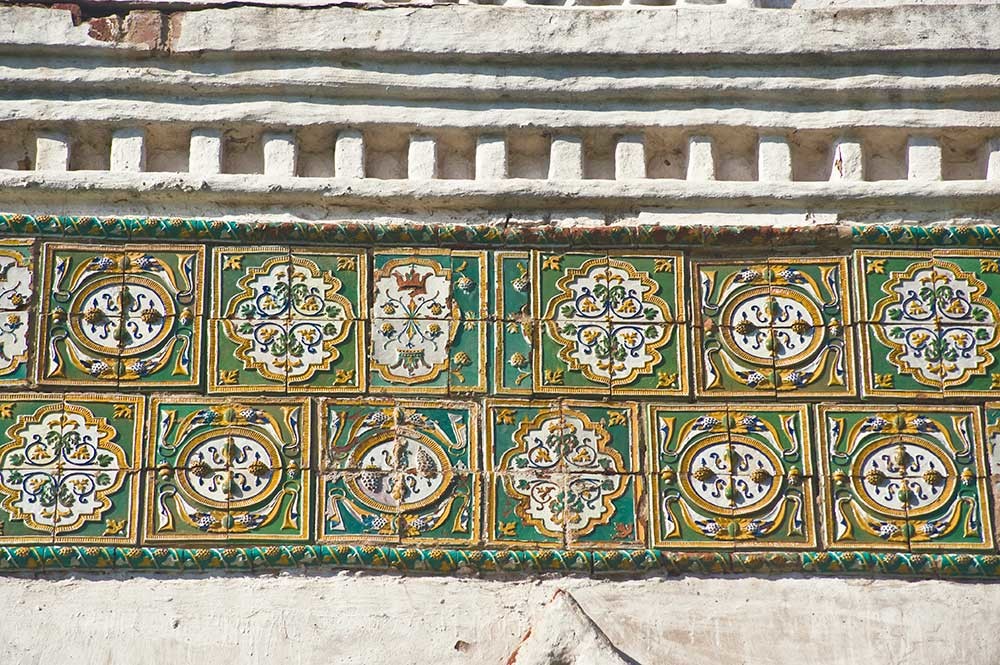
Church of the Most Merciful Savior. South facade with ceramic tile detail. August 8, 2009.
William Brumfield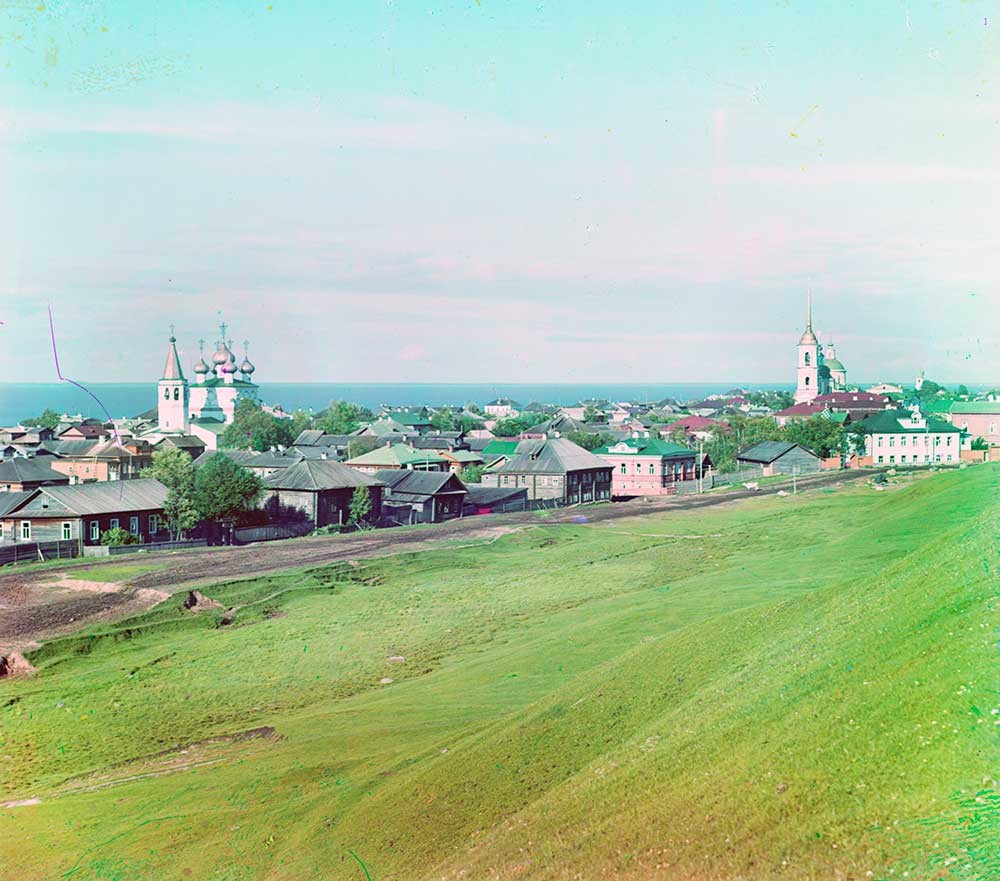
View east from kremlin rampart with Church of the Most Merciful Savior. Right: Church of the Nativity of Christ (demolished in 1930s). Summer 1909.
Sergei Prokudin-GorskyLocated near the lakeshore and clearly visible from the northeast ramparts of the Kremlin, the Church of the Merciful Savior — also known as the Savior Church on the Canal — was originally built in 1716-23 and reconstructed two years after the 1753 Belozersk fire. Its style shows similarities with major church architecture at the turn of the 18th century, such as the Epiphany Church (1683-93) near the Transfiguration Monastery in Yaroslavl, although there were important differences.
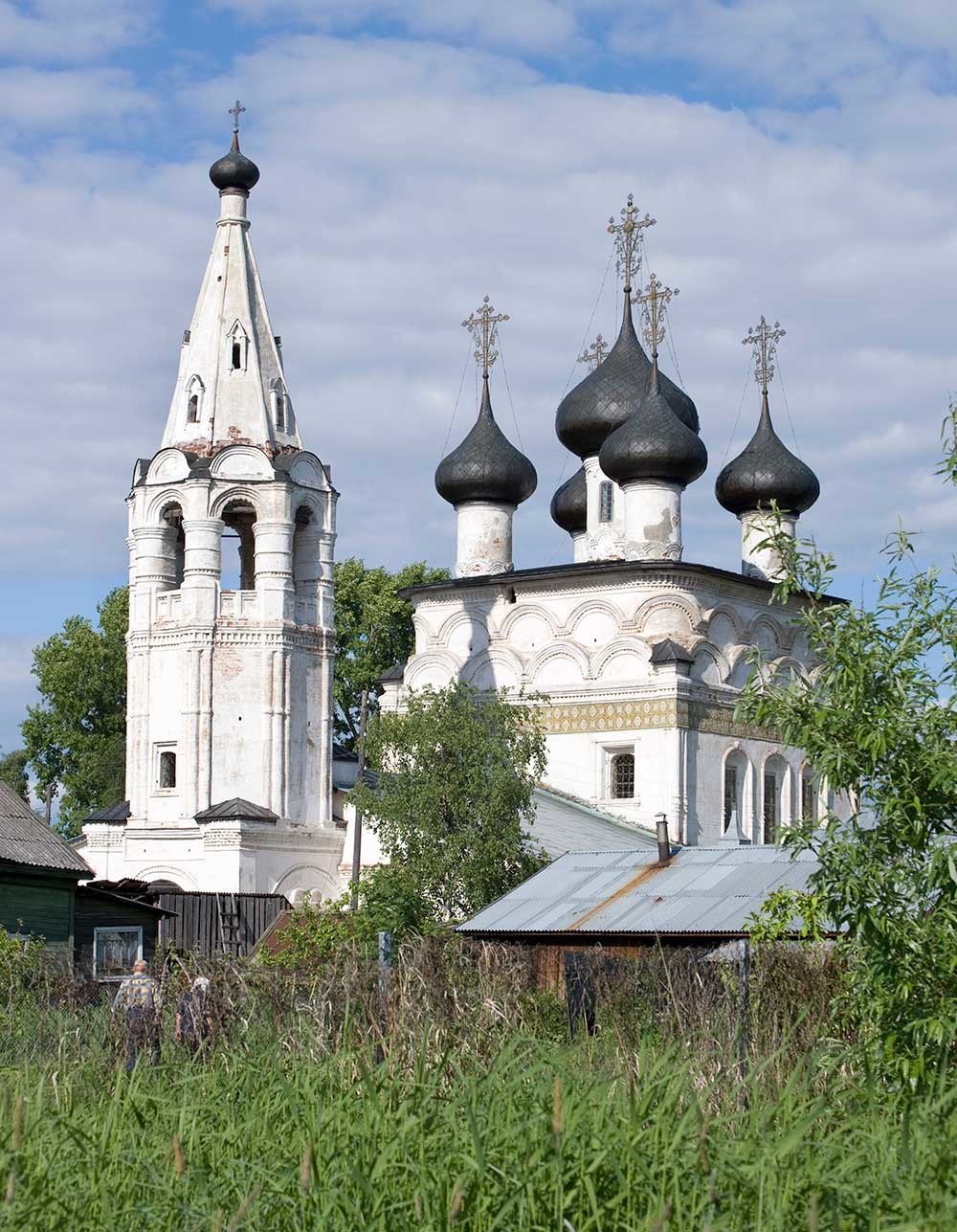
Church of the Most Merciful Savior, southwest view. June 9, 2010.
William BrumfieldMany churches in Yaroslavl during the late 17th century were built of
Ceramic decorative art in Russia underwent a revival in the 17th century. The extensive use of ornamental tiles not only proclaimed the wealth and beauty of the Orthodox
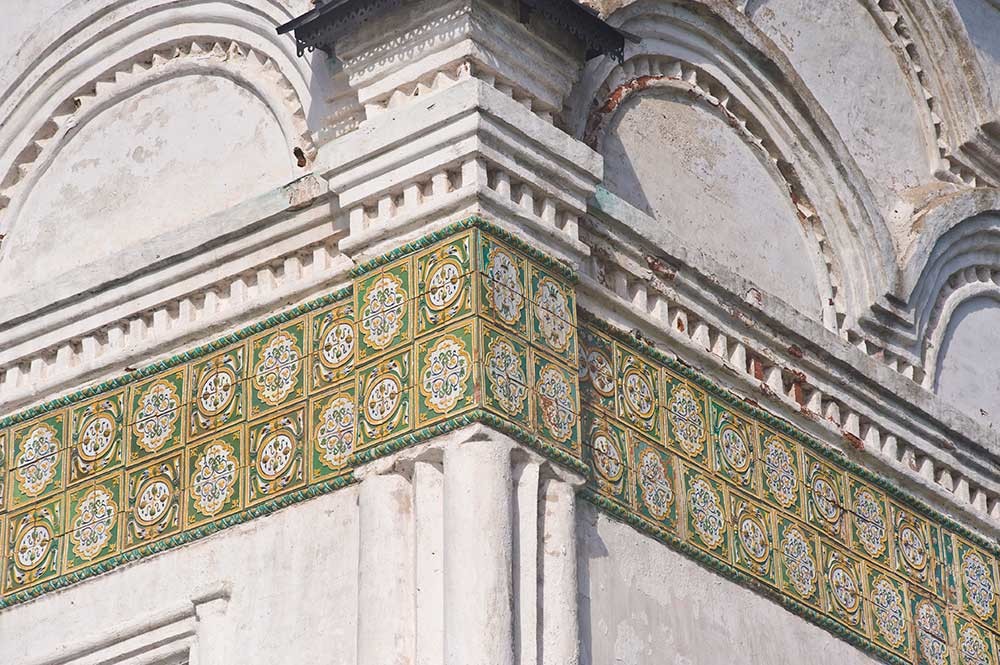
Church of the Most Merciful Savior. Ceramic tiles, southwest corner. August 8, 2009.
William BrumfieldThese ceramic rows above the main windows provide a transition to the brick bands of an ornamental cornice that supports stacked decorative gables (
The structural components of the Savior Church are united in a harmony of proportions. The bell tower — connected to the west side by a one-story vestibule — provides a graceful counterpoint to the main part of the church. On the east side, the extended low apse containing the central altar merges with the church’s east wall via a distinctive sloping roof crowned with a cupola.
Descration and restoration
During the Soviet era, the church interior was ransacked and converted to a warehouse. Only traces of its baroque decoration remain on the walls. Its altars included the Merciful Savior and four secondary altars dedicated to the Purification of the Virgin, St. Andrew, St. Dmitry of Salonika and St. Catherine.
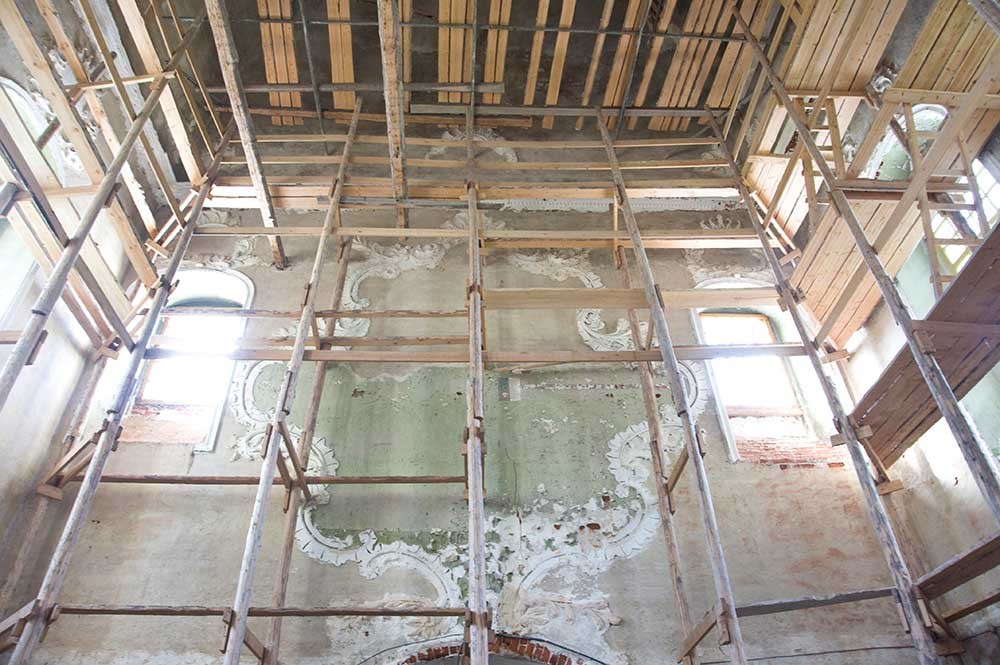
Church of the Most Merciful Savior, interior. West wall with Baroque plaster work. June 9, 2010.
William BrumfieldRestoration work begun in the 1980s did not address the danger of
In the early 20th century the Russian photographer Sergei Prokudin-Gorsky devised a complex process for color photography. Between 1903 and 1916 he traveled through the Russian Empire and took over 2,000 photographs with the process, which involved three exposures on a glass plate. In August 1918, he left Russia and ultimately resettled in France with a large part of his collection of glass negatives. After his death in Paris in 1944, his heirs sold the collection to the Library of Congress. In the early 21st century the Library digitized the Prokudin-Gorsky Collection and made it freely available to the global public. A number of Russian websites now have versions of the collection. In 1986 the architectural historian and photographer William Brumfield organized the first exhibit of Prokudin-Gorsky photographs at the Library of Congress. Over a period of work in Russia beginning in 1970, Brumfield has photographed most of the sites visited by Prokudin-Gorsky. This series of articles juxtaposes Prokudin-Gorsky’s views of architectural monuments with photographs taken by Brumfield decades later.
If using any of Russia Beyond's content, partly or in full, always provide an active hyperlink to the original material.
Subscribe
to our newsletter!
Get the week's best stories straight to your inbox